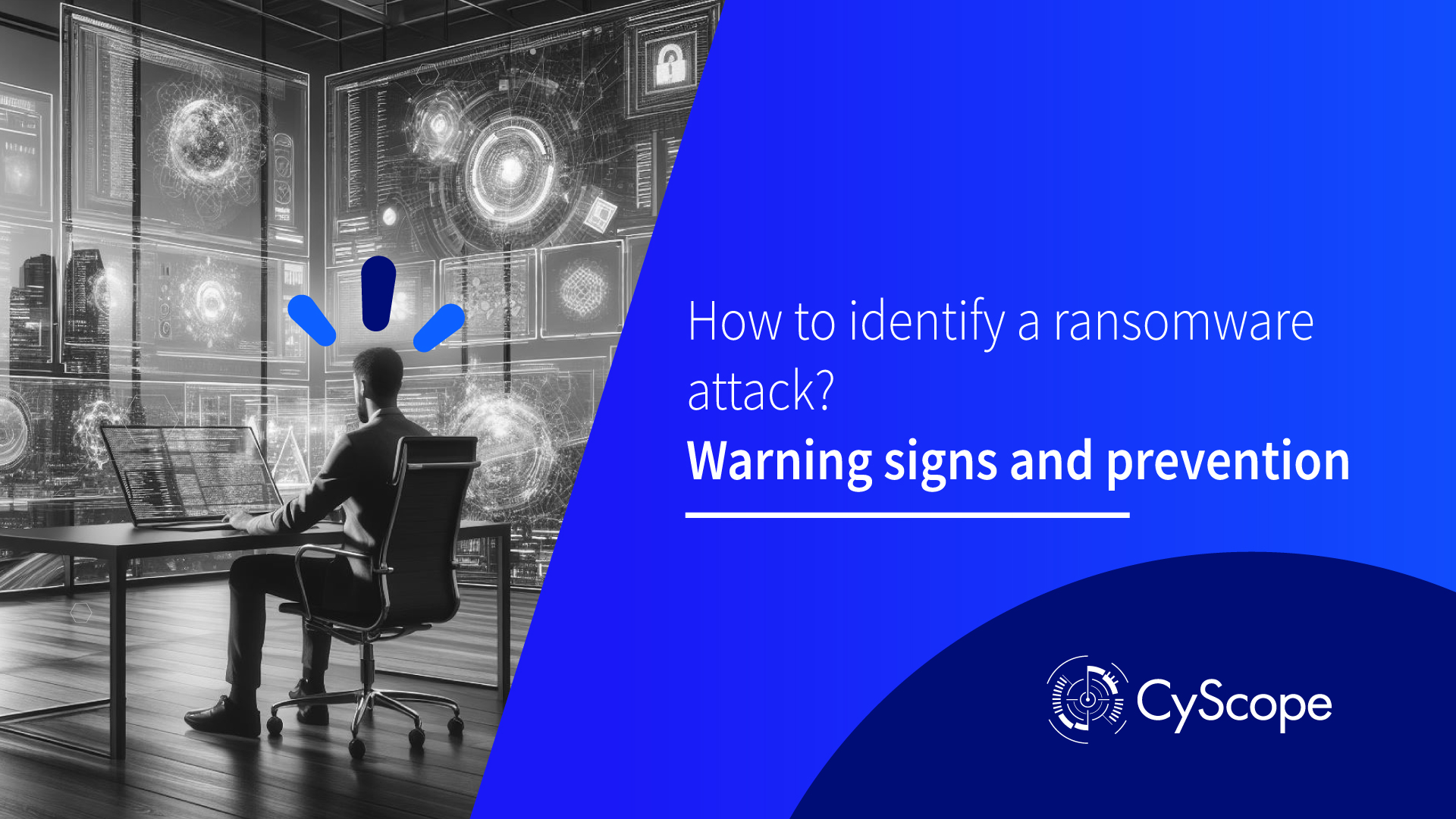Ransomware is one of the most dangerous and costly threats that businesses face today.This form of malware encrypts a company’s files and then demands a ransom in exchange for their release. Identifying a ransomware attack early is crucial to minimizing damage and avoiding irreparable financial and data losses.But how can one identify and prevent a ransomware attack before it’s too late?
Alert signs to identify ransomware attacks:
- Unexpected changes in files: If employees notice they can’t open certain files or files have been renamed with strange extensions, this could signal ransomware activation.
- Ransom notes: Ransomware attacks usually involve messages demanding a ransom in exchange for a decryption key. These messages often appear as pop-up windows or text files left in affected folders.
- System performance issues: Ransomware can significantly impact the performance of affected systems. If employees notice a sudden decrease in their computers’ speed or in the performance of applications, it’s a sign that a ransomware attack is underway.
- Unusual network activity: Ransomware attacks often generate an unusual amount of network traffic. If you notice a sudden increase in network usage, especially during off-hours, this could be an alert that a ransomware attack is underway.
- Detection by security software: Antivirus and antimalware programs can identify the presence of ransomware on a system. If your company’s security software issues an alert indicating ransomware detection, it’s crucial to attend this message and take immediate action.
You might be interested: Why is it important to protect a company’s digital assets?
Key processes that can help reduce the risk of suffering a ransomware attack:
Employee education and awareness
It’s important for the company to provide regular cybersecurity training to all employees. This training should enable them to recognize and avoid practices that can put the organization at risk, such as:
- Clicking on links
- Downloading attachments from unfamiliar sources
- Sharing confidential information
System updating and patching
Keep all operating systems, software, and applications up to date with the latest security patches to close potential vulnerabilities that cybercriminals could exploit.
Use of reliable security software
Implementing trusted antivirus, antimalware, and firewall solutions across all company devices and systems to detect and block ransomware threats before they can cause harm.
Restriction of access privileges
Limiting employee access privileges to only the resources and data necessary for their job tasks helps reduce the attack surface and potential spread of ransomware.
Implementation of robust security policies
Establishing clear cybersecurity policies and procedures to safeguard company assets. This includes prohibiting the installation of unauthorized software and conducting regular backups of critical data.
Why is it important not to agree to a ransom payment?
Paying a ransom doesn’t guarantee the recovery of encrypted files and only perpetuates the cycle of cybercrime. By giving in to the demands of cybercriminals, you’re directly funding their criminal activities, fostering more attacks, and contributing to the victims’ reputation as easy targets. Furthermore, paying the ransom doesn’t ensure data privacy and can result in long-term damage to the company, both financially and reputationally.
Conclusion
The threat of ransomware remains a significant concern for businesses today. Identifying and preventing these attacks is paramount to safeguarding your company’s assets and reputation. Likewise, employee education, system updates, reliable security software usage, and robust policy implementation are key steps in mitigating the risk of falling victim to ransomware. Ultimately, it is crucial to resist the temptation to pay ransoms, as doing so doesn’t ensure file recovery and only perpetuates the cycle of cybercrime.
Protect your companywith CyScope. Our team of cybersecurity experts is ready to assist you in identifying and mitigating vulnerabilities that facilitate the injection, spread, or propagation of ransomware. Contact us now to explore the top-notch solutions that CyScope provides to help companies reduce their cyber risks.

